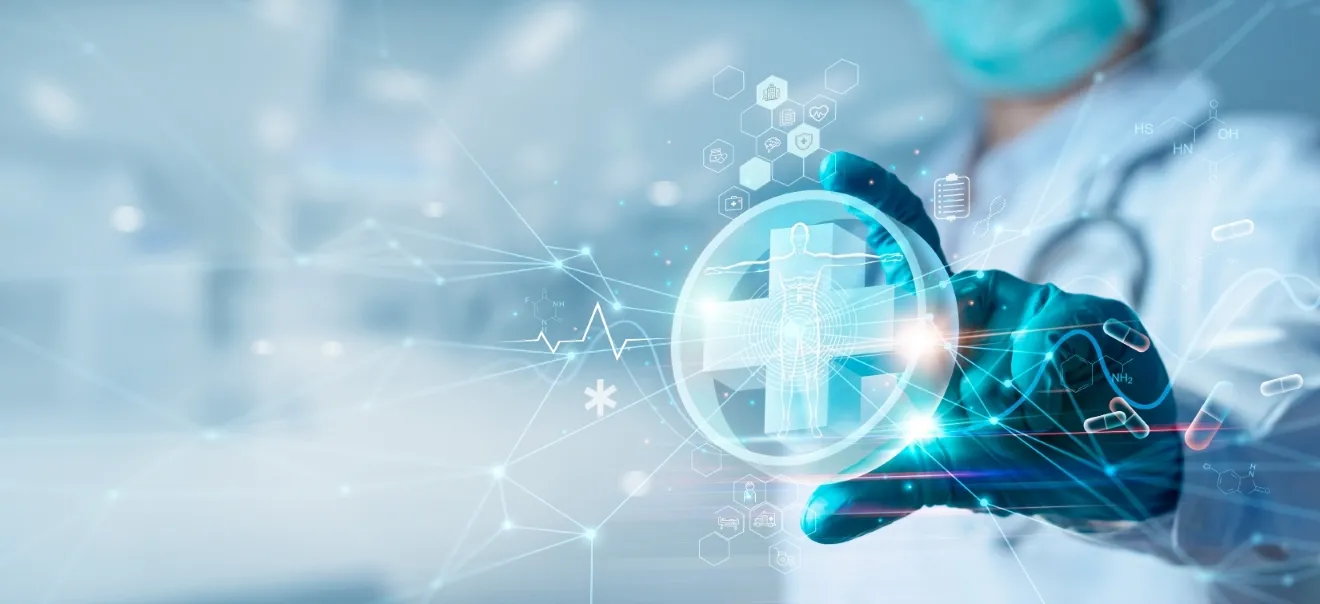Interleukin-6 (IL-6) Inhibitors Market 2025: Key Drivers, Innovations, and Regional Dynamics
The Interleukin-6 (IL-6) inhibitors market in 2025 is positioned for significant expansion, driven by the growing need for targeted therapies to treat chronic and autoimmune diseases. As IL-6 inhibitors become more widely recognized for their efficacy in managing a range of disorders such as rheumatoid arthritis, Castleman disease, and certain cancers, the market is set to evolve, creating opportunities for pharmaceutical companies and research organizations globally. This article delves into the key factors driving the market, emerging innovations, regional dynamics, and strategic considerations that stakeholders need to be aware of in 2025.
Market Drivers
- The IL-6 inhibitors market is primarily driven by the rising prevalence of chronic inflammatory and autoimmune diseases worldwide. Conditions like rheumatoid arthritis, systemic juvenile idiopathic arthritis, and Castleman disease require the use of immunosuppressive drugs like IL-6 inhibitors. These therapies specifically target interleukin-6, a cytokine that plays a crucial role in the immune response, thereby mitigating inflammation and alleviating the symptoms associated with these diseases.
- The aging global population is another major factor contributing to the growth of the IL-6 inhibitors market. As people live longer, they are more susceptible to autoimmune and inflammatory diseases, further increasing the demand for effective treatments. With the baby boomer generation entering their senior years, there is an inevitable increase in age-related inflammatory conditions, creating a larger patient base for IL-6 inhibitors.
- Additionally, advancements in diagnostic technology have played a critical role in identifying autoimmune diseases at earlier stages. As healthcare systems improve their ability to detect these conditions earlier, more patients are receiving timely interventions, which drives the need for effective and targeted therapies such as IL-6 inhibitors.
- Furthermore, the rise of personalized medicine is also propelling the IL-6 inhibitors market. Targeted treatments that cater to the specific genetic and molecular makeup of patients are becoming increasingly popular, and IL-6 inhibitors, with their ability to target specific cytokines, are ideally suited to meet the demand for precision medicine in autoimmune disease management.
Innovation in IL-6 Inhibitors
- Innovation is at the core of the IL-6 inhibitors market’s evolution. The first-generation IL-6 inhibitors, including tocilizumab and sarilumab, have revolutionized the treatment of rheumatoid arthritis and other autoimmune diseases. However, researchers are focusing on creating the next generation of IL-6 inhibitors, which promise improved efficacy, reduced side effects, and broader applications in other diseases.
- Monoclonal antibodies remain a dominant technology in this space, particularly in the development of biologics that can specifically target IL-6 receptors. These therapies have already demonstrated significant success in treating rheumatoid arthritis and related conditions, but research is ongoing to expand their use to other inflammatory disorders like inflammatory bowel disease, neurological diseases, and certain cancers such as glioblastoma.
- Another exciting development in IL-6 inhibitors is the exploration of oral therapies. Traditionally, these treatments have been delivered via injection, which can pose challenges for patient adherence. The development of oral IL-6 inhibitors could significantly enhance patient compliance, making treatments more accessible and convenient for individuals who prefer oral medications. This innovation could dramatically improve the overall patient experience and lead to broader adoption of IL-6 inhibitors.
- Biosimilars are also transforming the landscape of IL-6 inhibitors. As patents for first-generation biologics expire, companies are developing biosimilars—cost-effective versions of the original biologic drugs. These biosimilars provide patients with more affordable options while also increasing competition in the market, ultimately benefiting healthcare systems worldwide.
Regional Market Dynamics
- The regional dynamics of the IL-6 inhibitors market are driven by healthcare infrastructure, disease prevalence, and local market regulations. In North America, particularly in the United States, the market for IL-6 inhibitors is growing rapidly. The U.S. leads the world in pharmaceutical spending, and the high prevalence of autoimmune diseases like rheumatoid arthritis is further propelling the demand for targeted therapies. The country’s established healthcare system and robust pharmaceutical R&D investments provide a strong foundation for market expansion.
- Europe represents another key market for IL-6 inhibitors. Countries like Germany, France, and the United Kingdom have seen increasing adoption of IL-6 inhibitors due to a favorable regulatory environment and strong healthcare systems. The European Medicines Agency (EMA) has approved several IL-6 inhibitors, making them readily available across European markets. As the aging population in Europe increases, the demand for these therapies is expected to grow steadily in the coming years.
- Meanwhile, the Asia-Pacific region is quickly becoming a critical player in the global IL-6 inhibitors market. Nations such as China, India, and Japan are investing heavily in healthcare infrastructure and improving access to advanced therapies. Rising awareness about autoimmune diseases, combined with a large, aging population, is creating a substantial patient base for IL-6 inhibitors. The Asia-Pacific market is expected to witness rapid growth as healthcare accessibility improves and demand for innovative therapies rises.
Strategic Considerations for Market Stakeholders
- To succeed in the IL-6 inhibitors market, stakeholders must be mindful of several strategic considerations. One of the most critical factors is navigating the complex regulatory approval processes across different regions. Each market—whether North America, Europe, or Asia—has its own regulatory framework, and understanding these variations is crucial for successful product launches.
- Another important consideration is partnerships and collaborations. As the development of new IL-6 inhibitors becomes more complex, companies are increasingly forming partnerships with research institutions, academic bodies, and other pharmaceutical players to accelerate the research and development process. Strategic collaborations not only enhance product innovation but also provide access to clinical trial expertise, resources, and global distribution networks.
- In addition, the rise of biosimilars is reshaping the competitive landscape. While biosimilars offer a more affordable alternative to branded IL-6 inhibitors, they also introduce price competition. For pharmaceutical companies, staying ahead of the competition will require differentiating their products through superior clinical efficacy, innovative drug delivery systems, and enhanced patient experiences.
Conclusion
The IL-6 inhibitors market in 2025 is set for substantial growth, driven by technological innovations, increased disease prevalence, and an expanding global focus on precision medicine. As researchers continue to innovate and develop next-generation IL-6 inhibitors, these treatments are expected to play an increasingly pivotal role in managing autoimmune diseases and other complex conditions.
Regionally, North America, Europe, and the Asia-Pacific region will drive the market’s expansion, with each region benefiting from its own unique healthcare dynamics and growth opportunities. For stakeholders, maintaining a competitive edge will require strategic partnerships, navigating regulatory pathways, and differentiating their products through superior clinical outcomes.
As the demand for IL-6 inhibitors continues to rise, the pharmaceutical industry is on the cusp of a new era in personalized treatment for autoimmune and inflammatory diseases. The future of IL-6 inhibitors looks bright, with the potential to expand into new therapeutic areas and improve the lives of millions of patients worldwide.
NOTE:
Quants and Trends is proud to offer an extensive portfolio of meticulously researched healthcare market reports, numbering in the thousands. We also provide tailored customization services to ensure our insights align precisely with your strategic objectives and informational needs. For personalized assistance or to discuss your specific requirements, we invite you to get in touch with our team. We also encourage you to request a complimentary sample PDF report. Please visit our Sample Request Page to receive yours today.
Key Market Players
AbbVie
Astra Zeneca
Bausch Health
Eli Lilly
Glaxo Smith Kline
Johnson and Johnson Services
Novartis
Regeneron Pharmaceuticals
Roche
Teva Pharmaceutical
Segmentation By Type
Tocilizumab
Siltuximab
Sylvant
Segmentation By Application
Retail Pharmacies
Hospital Pharmacies
Others
Segmentation By Region
North America (United States, Canada and Mexico)
Europe (Germany, France, United Kingdom, Russia, Italy, and Rest of Europe)
Asia-Pacific (China, Japan, Korea, India, Southeast Asia, and Australia)
South America (Brazil, Argentina, Colombia, and Rest of South America)
Middle East & Africa (Saudi Arabia, UAE, Egypt, South Africa, and Rest of Middle East & Africa)
Market SWOT Analysis
What are the strengths of the IL-6 inhibitors market in 2025?
IL-6 inhibitors have demonstrated effectiveness in treating autoimmune diseases, such as rheumatoid arthritis, and are expanding into other therapeutic areas, including cancer and COVID-19 treatment. Their potential to address a variety of conditions increases market demand, driving growth and innovation. Additionally, the approval of multiple IL-6 inhibitors by regulatory bodies strengthens market credibility.
What weaknesses are associated with the IL-6 inhibitors market?
The high cost of IL-6 inhibitors limits accessibility for a significant portion of the population. There are also concerns about long-term safety and side effects, such as increased risk of infections and cardiovascular events. Moreover, the development and production of IL-6 inhibitors can be complex, leading to potential supply chain challenges and price volatility.
What opportunities exist for the IL-6 inhibitors market by 2025?
The market can grow through expanding indications for IL-6 inhibitors, particularly in emerging diseases like cytokine release syndrome and other inflammatory conditions. There’s also potential for increased adoption in developing countries as healthcare infrastructure improves. Advancements in biologics manufacturing could lower production costs, increasing affordability and market penetration.
What threats could impact the IL-6 inhibitors market by 2025?
Competition from biosimilars and other emerging therapies could erode market share for existing IL-6 inhibitors. Additionally, regulatory hurdles and changing healthcare policies could affect reimbursement rates, limiting the growth of the market. Furthermore, any unforeseen adverse effects or safety concerns may slow adoption or lead to product recalls, impacting market stability.
Market PESTEL Analysis
What political factors will influence the IL-6 inhibitors market in 2025?
Government regulations on healthcare pricing and reimbursement policies will significantly impact the market. Political decisions related to healthcare funding, particularly in public healthcare systems, could affect the affordability and accessibility of IL-6 inhibitors. Additionally, changes in healthcare policy or the approval processes for biologics could either expedite or delay market growth.
How will economic factors affect the IL-6 inhibitors market?
The high cost of IL-6 inhibitors could limit access, particularly in developing countries, impacting overall market demand. Economic downturns or reduced healthcare budgets in certain regions could lead to reduced spending on expensive biologics. Conversely, growing economies and increased healthcare expenditure in emerging markets could expand market opportunities.
What social factors will influence the IL-6 inhibitors market?
As patient awareness of autoimmune and inflammatory diseases increases, demand for effective treatments like IL-6 inhibitors will grow. Additionally, an aging global population will contribute to rising cases of diseases such as rheumatoid arthritis, boosting demand. However, societal attitudes towards high-cost treatments and patient access to advanced therapies may also affect market growth.
How will technological advancements impact the IL-6 inhibitors market?
Advancements in biotechnology and biologics manufacturing processes can lead to more efficient production of IL-6 inhibitors, potentially lowering costs and expanding market access. Additionally, innovations in drug delivery systems, such as subcutaneous injections or oral formulations, could improve patient compliance and broaden the market for IL-6 inhibitors.
What environmental factors will affect the IL-6 inhibitors market?
Sustainability in the production of biologic drugs is becoming increasingly important. Environmental concerns over the carbon footprint of manufacturing processes and the disposal of medical waste could influence the production and distribution of IL-6 inhibitors. Moreover, regulatory pressures for greener production methods could affect the cost and scalability of these therapies.
What legal factors should be considered in the IL-6 inhibitors market?
Patent expirations and the rise of biosimilars will play a crucial role in shaping the market, as generic competition could reduce prices. Legal challenges related to intellectual property rights, licensing agreements, and patent protections could impact both market exclusivity and the competitive landscape. Moreover, any changes in drug approval standards or safety regulations could affect market dynamics.
Market SIPOC Analysis
Who are the suppliers in the IL-6 inhibitors market?
Suppliers include pharmaceutical companies that manufacture IL-6 inhibitors, raw material providers for biologics production, research organizations, and contract manufacturing organizations (CMOs) that handle the production of these biologics. Additionally, suppliers of biotechnology equipment and specialized delivery systems for IL-6 inhibitors play a role in the market.
What are the inputs required for the IL-6 inhibitors market?
Key inputs include active pharmaceutical ingredients (APIs), advanced biotechnology for drug development, clinical trial data, regulatory approvals, and production facilities. Additionally, funding for research and development, as well as healthcare infrastructure for distribution, are crucial components for the successful launch and scalability of IL-6 inhibitors.
What is the process involved in the IL-6 inhibitors market?
The process begins with research and development of IL-6 inhibitors, followed by clinical trials to establish efficacy and safety. After successful trials, regulatory approval is sought from health authorities like the FDA or EMA. Post-approval, these inhibitors are produced, marketed, and distributed to healthcare providers, who then prescribe them to patients. Ongoing monitoring for side effects and safety concerns is also part of the process.
Who are the customers in the IL-6 inhibitors market?
The primary customers are healthcare providers, including hospitals, clinics, and private practices, who prescribe IL-6 inhibitors to patients suffering from autoimmune diseases, inflammatory conditions, and certain cancers. Additionally, healthcare systems, insurance companies, and pharmaceutical wholesalers are key customers involved in the distribution and reimbursement processes.
What are the outputs or outcomes in the IL-6 inhibitors market?
The primary output is the effective treatment of patients with diseases like rheumatoid arthritis, cytokine release syndrome, and other inflammatory conditions. Market outcomes include increased sales and revenue for pharmaceutical companies, greater patient access to advanced therapies, and advancements in medical science for treating immune-mediated disorders. Furthermore, the long-term outcome includes improved patient quality of life and potentially lower healthcare costs due to reduced disease complications.
Market Porter's Five Forces
How strong is the threat of new entrants in the IL-6 inhibitors market?
The threat of new entrants is moderate. While the IL-6 inhibitors market is highly lucrative, entering this space requires significant investment in research, development, and regulatory approvals. Established pharmaceutical companies dominate the market, making it difficult for new players to compete, particularly in terms of cost, technology, and market access.
How intense is the rivalry among existing competitors in the IL-6 inhibitors market?
The rivalry among existing competitors is high. Large pharmaceutical companies like Roche and AbbVie lead the market, but as the market grows, other players are entering with similar products and biosimilars. This competition drives innovation but also creates pricing pressures, especially as patents on existing IL-6 inhibitors begin to expire.
What is the bargaining power of suppliers in the IL-6 inhibitors market?
The bargaining power of suppliers is moderate. While the production of IL-6 inhibitors requires specialized raw materials and technologies, there are multiple suppliers for these inputs. However, the high complexity and cost associated with biologic production give some suppliers leverage, particularly in the production of active pharmaceutical ingredients (APIs) and complex biologics manufacturing processes.
What is the bargaining power of buyers in the IL-6 inhibitors market?
The bargaining power of buyers is relatively moderate but increasing. Healthcare providers and insurance companies have a growing influence on drug pricing, especially as the cost of biologics rises. In some markets, buyers can negotiate for lower prices or demand alternative treatments as more IL-6 inhibitors and biosimilars become available, increasing competition and reducing costs over time.
What is the threat of substitute products in the IL-6 inhibitors market?
The threat of substitutes is moderate. While IL-6 inhibitors are effective in treating autoimmune diseases and inflammatory conditions, there are other biologic therapies and small molecule drugs that serve similar functions, such as TNF inhibitors or JAK inhibitors. As new therapies are developed, the threat of substitutes could grow, though IL-6 inhibitors are still favored for certain conditions due to their unique mechanism of action.
Market Upstream Analysis
What are the key raw materials needed for IL-6 inhibitors production?
The production of IL-6 inhibitors requires complex biological materials, including recombinant proteins, monoclonal antibodies, and cell culture media. Raw materials also include cytokine precursors, growth factors, and specialized reagents for protein synthesis and purification. Additionally, the development of specialized delivery systems, such as injection pens, requires materials like plastics and rubber.
What are the main suppliers involved in the upstream process?
Suppliers in the upstream process include biotechnology companies that provide the necessary cell lines for biologic production, companies supplying recombinant DNA technologies, and suppliers of raw materials like growth factors and protein expression systems. Equipment suppliers that provide bioreactors, filtration units, and other specialized tools for large-scale production are also critical players.
What technological advancements are influencing the upstream process?
Technological advancements like improved cell culture techniques, optimized bioreactor designs, and more efficient protein purification technologies are crucial in enhancing the production of IL-6 inhibitors. Innovations in gene editing, such as CRISPR, also hold promise for streamlining biologic development. Furthermore, advancements in single-use technologies for bioreactors are reducing production costs and improving scalability.
What are the regulatory challenges in the upstream process?
The upstream process faces strict regulatory oversight, as any errors in biologic production can affect drug safety and efficacy. Companies must comply with Good Manufacturing Practice (GMP) standards, and there are stringent regulations for cell line development, bioreactor operations, and final product testing. Regulatory approvals from bodies like the FDA and EMA are essential to ensure that production methods meet safety and quality standards.
What are the cost-related challenges in the upstream process?
The production of IL-6 inhibitors is costly due to the need for highly specialized raw materials, sophisticated technology, and strict regulatory compliance. Scaling up production while maintaining high quality adds complexity and increases costs. As the market grows and more biosimilars are developed, managing these production costs effectively will be key to maintaining competitive pricing.
Market Midstream Analysis
What are the key processes involved in the midstream stage of IL-6 inhibitors production?
The midstream stage involves the scaling up of production from the laboratory to commercial-scale manufacturing. This includes large-scale fermentation or cell culture, where the biologic drug is produced using bioreactors. The production process is followed by the purification, formulation, and packaging of the IL-6 inhibitors, ensuring they meet quality standards before distribution.
How do distribution networks impact the IL-6 inhibitors market?
Distribution networks are vital in ensuring timely delivery of IL-6 inhibitors to healthcare providers and patients. These include pharmaceutical wholesalers, specialty distributors, and logistics companies that handle temperature-sensitive biologics. Efficient distribution channels are crucial for managing costs and ensuring that the drugs are available in global markets, especially in regions with varying healthcare infrastructures.
What role do contract manufacturers play in the midstream process?
Contract manufacturing organizations (CMOs) play a significant role in the midstream process by providing outsourced manufacturing capabilities for IL-6 inhibitors. They allow pharmaceutical companies to scale production without investing heavily in infrastructure. CMOs also bring expertise in regulatory compliance, quality control, and cost-effective production practices, which are essential for meeting the high demand in the market.
What are the quality control and testing requirements during the midstream phase?
Quality control and testing are critical during the midstream stage to ensure that IL-6 inhibitors are safe, effective, and meet regulatory standards. This includes rigorous testing for potency, purity, and sterility, as well as stability testing under various storage conditions. Any deviation from expected results can lead to delays in production, regulatory issues, or market recalls, making this stage crucial for maintaining product integrity.
How does the pricing strategy evolve during the midstream phase?
Pricing strategies in the midstream phase are influenced by manufacturing costs, demand forecasts, and competition. As IL-6 inhibitors move through the production process, pharmaceutical companies often evaluate the costs associated with scaling up manufacturing, as well as potential pricing pressures from emerging biosimilars. The pricing strategy needs to account for both market penetration and cost recovery, especially as production volumes increase.
Market Downstream Analysis
What are the key activities in the downstream phase of the IL-6 inhibitors market?
The downstream phase focuses on the distribution and commercialization of IL-6 inhibitors. This involves getting the drugs to hospitals, clinics, and pharmacies, where healthcare providers prescribe them to patients. Additionally, patient support programs, education on drug administration, and post-market surveillance for adverse effects are important aspects of this phase.
How does the marketing and sales strategy impact the IL-6 inhibitors market?
Marketing and sales strategies are crucial for promoting IL-6 inhibitors, especially as competition from biosimilars grows. Pharmaceutical companies invest in raising awareness among healthcare professionals about the efficacy and safety profiles of their drugs. Direct marketing to hospitals, collaborations with insurance providers for reimbursement, and participation in medical conferences are common sales strategies to increase market penetration.
What role do healthcare providers play in the downstream process?
Healthcare providers are at the core of the downstream process as they prescribe IL-6 inhibitors to patients based on medical needs. Their expertise, combined with patient outcomes, plays a key role in determining the market success of these drugs. Collaboration with doctors, rheumatologists, oncologists, and specialists is essential for ensuring proper patient selection and optimal use of IL-6 inhibitors.
How do pricing and reimbursement systems affect the downstream phase?
Pricing and reimbursement are significant factors in the downstream phase. The cost of IL-6 inhibitors can be a barrier to access, especially in regions with limited healthcare budgets. Payers, including insurance companies and government health systems, negotiate reimbursement rates, which impacts patient access to these therapies. High drug prices can limit adoption, while favorable reimbursement policies can drive broader use.
What challenges are faced in the downstream phase of the IL-6 inhibitors market?
Challenges in the downstream phase include issues with drug accessibility and affordability, particularly in low-income regions. Distribution networks must also navigate regulatory challenges and ensure that drugs are stored and transported under the required conditions. Additionally, competition from biosimilars and the potential for drug shortages due to manufacturing delays can disrupt market stability.
Chapter 1, to describe Interleukin-6 (IL-6) Inhibitors product scope, market overview, market estimation caveats and base year.
Chapter 2, to profile the top manufacturers of Interleukin-6 (IL-6) Inhibitors, with price, sales, revenue and global market share of Interleukin-6 (IL-6) Inhibitors from 2018 to 2023.
Chapter 3, the Interleukin-6 (IL-6) Inhibitors competitive situation, sales quantity, revenue and global market share of top manufacturers are analyzed emphatically by landscape contrast.
Chapter 4, the Interleukin-6 (IL-6) Inhibitors breakdown data are shown at the regional level, to show the sales quantity, consumption value and growth by regions, from 2018 to 2029.
Chapter 5 and 6, to segment the sales by Type and application, with sales market share and growth rate by type, application, from 2018 to 2029.
Chapter 7, 8, 9, 10 and 11, to break the sales data at the country level, with sales quantity, consumption value and market share for key countries in the world, from 2017 to 2022.and Interleukin-6 (IL-6) Inhibitors market forecast, by regions, type and application, with sales and revenue, from 2024 to 2029.
Chapter 12, market dynamics, drivers, restraints, trends, Porters Five Forces analysis, and Influence of COVID-19 and Russia-Ukraine War.
Chapter 13, the key raw materials and key suppliers, and industry chain of Interleukin-6 (IL-6) Inhibitors.
Chapter 14 and 15, to describe Interleukin-6 (IL-6) Inhibitors sales channel, distributors, customers, research findings and conclusion.
1 Market Overview
1.1 Product Overview and Scope of Interleukin-6 (IL-6) Inhibitors
1.2 Market Estimation Caveats and Base Year
1.3 Market Analysis by Type
1.3.1 Overview: Global Interleukin-6 (IL-6) Inhibitors Consumption Value by Type: 2018 Versus 2022 Versus 2029
1.3.2 Tocilizumab
1.3.3 Siltuximab
1.3.4 Sylvant
1.4 Market Analysis by Application
1.4.1 Overview: Global Interleukin-6 (IL-6) Inhibitors Consumption Value by Application: 2018 Versus 2022 Versus 2029
1.4.2 Retail Pharmacies
1.4.3 Hospital Pharmacies
1.4.4 Others
1.5 Global Interleukin-6 (IL-6) Inhibitors Market Size & Forecast
1.5.1 Global Interleukin-6 (IL-6) Inhibitors Consumption Value (2018 & 2022 & 2029)
1.5.2 Global Interleukin-6 (IL-6) Inhibitors Sales Quantity (2018-2029)
1.5.3 Global Interleukin-6 (IL-6) Inhibitors Average Price (2018-2029)
2 Manufacturers Profiles
2.1 AbbVie
2.1.1 AbbVie Details
2.1.2 AbbVie Major Business
2.1.3 AbbVie Interleukin-6 (IL-6) Inhibitors Product and Services
2.1.4 AbbVie Interleukin-6 (IL-6) Inhibitors Sales Quantity, Average Price, Revenue, Gross Margin and Market Share (2018-2023)
2.1.5 AbbVie Recent Developments/Updates
2.2 Astra Zeneca
2.2.1 Astra Zeneca Details
2.2.2 Astra Zeneca Major Business
2.2.3 Astra Zeneca Interleukin-6 (IL-6) Inhibitors Product and Services
2.2.4 Astra Zeneca Interleukin-6 (IL-6) Inhibitors Sales Quantity, Average Price, Revenue, Gross Margin and Market Share (2018-2023)
2.2.5 Astra Zeneca Recent Developments/Updates
2.3 Bausch Health
2.3.1 Bausch Health Details
2.3.2 Bausch Health Major Business
2.3.3 Bausch Health Interleukin-6 (IL-6) Inhibitors Product and Services
2.3.4 Bausch Health Interleukin-6 (IL-6) Inhibitors Sales Quantity, Average Price, Revenue, Gross Margin and Market Share (2018-2023)
2.3.5 Bausch Health Recent Developments/Updates
2.4 Eli Lilly
2.4.1 Eli Lilly Details
2.4.2 Eli Lilly Major Business
2.4.3 Eli Lilly Interleukin-6 (IL-6) Inhibitors Product and Services
2.4.4 Eli Lilly Interleukin-6 (IL-6) Inhibitors Sales Quantity, Average Price, Revenue, Gross Margin and Market Share (2018-2023)
2.4.5 Eli Lilly Recent Developments/Updates
2.5 Glaxo Smith Kline
2.5.1 Glaxo Smith Kline Details
2.5.2 Glaxo Smith Kline Major Business
2.5.3 Glaxo Smith Kline Interleukin-6 (IL-6) Inhibitors Product and Services
2.5.4 Glaxo Smith Kline Interleukin-6 (IL-6) Inhibitors Sales Quantity, Average Price, Revenue, Gross Margin and Market Share (2018-2023)
2.5.5 Glaxo Smith Kline Recent Developments/Updates
2.6 Johnson and Johnson Services
2.6.1 Johnson and Johnson Services Details
2.6.2 Johnson and Johnson Services Major Business
2.6.3 Johnson and Johnson Services Interleukin-6 (IL-6) Inhibitors Product and Services
2.6.4 Johnson and Johnson Services Interleukin-6 (IL-6) Inhibitors Sales Quantity, Average Price, Revenue, Gross Margin and Market Share (2018-2023)
2.6.5 Johnson and Johnson Services Recent Developments/Updates
2.7 Novartis
2.7.1 Novartis Details
2.7.2 Novartis Major Business
2.7.3 Novartis Interleukin-6 (IL-6) Inhibitors Product and Services
2.7.4 Novartis Interleukin-6 (IL-6) Inhibitors Sales Quantity, Average Price, Revenue, Gross Margin and Market Share (2018-2023)
2.7.5 Novartis Recent Developments/Updates
2.8 Regeneron Pharmaceuticals
2.8.1 Regeneron Pharmaceuticals Details
2.8.2 Regeneron Pharmaceuticals Major Business
2.8.3 Regeneron Pharmaceuticals Interleukin-6 (IL-6) Inhibitors Product and Services
2.8.4 Regeneron Pharmaceuticals Interleukin-6 (IL-6) Inhibitors Sales Quantity, Average Price, Revenue, Gross Margin and Market Share (2018-2023)
2.8.5 Regeneron Pharmaceuticals Recent Developments/Updates
2.9 Roche
2.9.1 Roche Details
2.9.2 Roche Major Business
2.9.3 Roche Interleukin-6 (IL-6) Inhibitors Product and Services
2.9.4 Roche Interleukin-6 (IL-6) Inhibitors Sales Quantity, Average Price, Revenue, Gross Margin and Market Share (2018-2023)
2.9.5 Roche Recent Developments/Updates
2.10 Teva Pharmaceutical
2.10.1 Teva Pharmaceutical Details
2.10.2 Teva Pharmaceutical Major Business
2.10.3 Teva Pharmaceutical Interleukin-6 (IL-6) Inhibitors Product and Services
2.10.4 Teva Pharmaceutical Interleukin-6 (IL-6) Inhibitors Sales Quantity, Average Price, Revenue, Gross Margin and Market Share (2018-2023)
2.10.5 Teva Pharmaceutical Recent Developments/Updates
3 Competitive Environment: Interleukin-6 (IL-6) Inhibitors by Manufacturer
3.1 Global Interleukin-6 (IL-6) Inhibitors Sales Quantity by Manufacturer (2018-2023)
3.2 Global Interleukin-6 (IL-6) Inhibitors Revenue by Manufacturer (2018-2023)
3.3 Global Interleukin-6 (IL-6) Inhibitors Average Price by Manufacturer (2018-2023)
3.4 Market Share Analysis (2022)
3.4.1 Producer Shipments of Interleukin-6 (IL-6) Inhibitors by Manufacturer Revenue ($MM) and Market Share (%): 2022
3.4.2 Top 3 Interleukin-6 (IL-6) Inhibitors Manufacturer Market Share in 2022
3.4.2 Top 6 Interleukin-6 (IL-6) Inhibitors Manufacturer Market Share in 2022
3.5 Interleukin-6 (IL-6) Inhibitors Market: Overall Company Footprint Analysis
3.5.1 Interleukin-6 (IL-6) Inhibitors Market: Region Footprint
3.5.2 Interleukin-6 (IL-6) Inhibitors Market: Company Product Type Footprint
3.5.3 Interleukin-6 (IL-6) Inhibitors Market: Company Product Application Footprint
3.6 New Market Entrants and Barriers to Market Entry
3.7 Mergers, Acquisition, Agreements, and Collaborations
4 Consumption Analysis by Region
4.1 Global Interleukin-6 (IL-6) Inhibitors Market Size by Region
4.1.1 Global Interleukin-6 (IL-6) Inhibitors Sales Quantity by Region (2018-2029)
4.1.2 Global Interleukin-6 (IL-6) Inhibitors Consumption Value by Region (2018-2029)
4.1.3 Global Interleukin-6 (IL-6) Inhibitors Average Price by Region (2018-2029)
4.2 North America Interleukin-6 (IL-6) Inhibitors Consumption Value (2018-2029)
4.3 Europe Interleukin-6 (IL-6) Inhibitors Consumption Value (2018-2029)
4.4 Asia-Pacific Interleukin-6 (IL-6) Inhibitors Consumption Value (2018-2029)
4.5 South America Interleukin-6 (IL-6) Inhibitors Consumption Value (2018-2029)
4.6 Middle East and Africa Interleukin-6 (IL-6) Inhibitors Consumption Value (2018-2029)
5 Market Segment by Type
5.1 Global Interleukin-6 (IL-6) Inhibitors Sales Quantity by Type (2018-2029)
5.2 Global Interleukin-6 (IL-6) Inhibitors Consumption Value by Type (2018-2029)
5.3 Global Interleukin-6 (IL-6) Inhibitors Average Price by Type (2018-2029)
6 Market Segment by Application
6.1 Global Interleukin-6 (IL-6) Inhibitors Sales Quantity by Application (2018-2029)
6.2 Global Interleukin-6 (IL-6) Inhibitors Consumption Value by Application (2018-2029)
6.3 Global Interleukin-6 (IL-6) Inhibitors Average Price by Application (2018-2029)
7 North America
7.1 North America Interleukin-6 (IL-6) Inhibitors Sales Quantity by Type (2018-2029)
7.2 North America Interleukin-6 (IL-6) Inhibitors Sales Quantity by Application (2018-2029)
7.3 North America Interleukin-6 (IL-6) Inhibitors Market Size by Country
7.3.1 North America Interleukin-6 (IL-6) Inhibitors Sales Quantity by Country (2018-2029)
7.3.2 North America Interleukin-6 (IL-6) Inhibitors Consumption Value by Country (2018-2029)
7.3.3 United States Market Size and Forecast (2018-2029)
7.3.4 Canada Market Size and Forecast (2018-2029)
7.3.5 Mexico Market Size and Forecast (2018-2029)
8 Europe
8.1 Europe Interleukin-6 (IL-6) Inhibitors Sales Quantity by Type (2018-2029)
8.2 Europe Interleukin-6 (IL-6) Inhibitors Sales Quantity by Application (2018-2029)
8.3 Europe Interleukin-6 (IL-6) Inhibitors Market Size by Country
8.3.1 Europe Interleukin-6 (IL-6) Inhibitors Sales Quantity by Country (2018-2029)
8.3.2 Europe Interleukin-6 (IL-6) Inhibitors Consumption Value by Country (2018-2029)
8.3.3 Germany Market Size and Forecast (2018-2029)
8.3.4 France Market Size and Forecast (2018-2029)
8.3.5 United Kingdom Market Size and Forecast (2018-2029)
8.3.6 Russia Market Size and Forecast (2018-2029)
8.3.7 Italy Market Size and Forecast (2018-2029)
9 Asia-Pacific
9.1 Asia-Pacific Interleukin-6 (IL-6) Inhibitors Sales Quantity by Type (2018-2029)
9.2 Asia-Pacific Interleukin-6 (IL-6) Inhibitors Sales Quantity by Application (2018-2029)
9.3 Asia-Pacific Interleukin-6 (IL-6) Inhibitors Market Size by Region
9.3.1 Asia-Pacific Interleukin-6 (IL-6) Inhibitors Sales Quantity by Region (2018-2029)
9.3.2 Asia-Pacific Interleukin-6 (IL-6) Inhibitors Consumption Value by Region (2018-2029)
9.3.3 China Market Size and Forecast (2018-2029)
9.3.4 Japan Market Size and Forecast (2018-2029)
9.3.5 Korea Market Size and Forecast (2018-2029)
9.3.6 India Market Size and Forecast (2018-2029)
9.3.7 Southeast Asia Market Size and Forecast (2018-2029)
9.3.8 Australia Market Size and Forecast (2018-2029)
10 South America
10.1 South America Interleukin-6 (IL-6) Inhibitors Sales Quantity by Type (2018-2029)
10.2 South America Interleukin-6 (IL-6) Inhibitors Sales Quantity by Application (2018-2029)
10.3 South America Interleukin-6 (IL-6) Inhibitors Market Size by Country
10.3.1 South America Interleukin-6 (IL-6) Inhibitors Sales Quantity by Country (2018-2029)
10.3.2 South America Interleukin-6 (IL-6) Inhibitors Consumption Value by Country (2018-2029)
10.3.3 Brazil Market Size and Forecast (2018-2029)
10.3.4 Argentina Market Size and Forecast (2018-2029)
11 Middle East & Africa
11.1 Middle East & Africa Interleukin-6 (IL-6) Inhibitors Sales Quantity by Type (2018-2029)
11.2 Middle East & Africa Interleukin-6 (IL-6) Inhibitors Sales Quantity by Application (2018-2029)
11.3 Middle East & Africa Interleukin-6 (IL-6) Inhibitors Market Size by Country
11.3.1 Middle East & Africa Interleukin-6 (IL-6) Inhibitors Sales Quantity by Country (2018-2029)
11.3.2 Middle East & Africa Interleukin-6 (IL-6) Inhibitors Consumption Value by Country (2018-2029)
11.3.3 Turkey Market Size and Forecast (2018-2029)
11.3.4 Egypt Market Size and Forecast (2018-2029)
11.3.5 Saudi Arabia Market Size and Forecast (2018-2029)
11.3.6 South Africa Market Size and Forecast (2018-2029)
12 Market Dynamics
12.1 Interleukin-6 (IL-6) Inhibitors Market Drivers
12.2 Interleukin-6 (IL-6) Inhibitors Market Restraints
12.3 Interleukin-6 (IL-6) Inhibitors Trends Analysis
12.4 Porters Five Forces Analysis
12.4.1 Threat of New Entrants
12.4.2 Bargaining Power of Suppliers
12.4.3 Bargaining Power of Buyers
12.4.4 Threat of Substitutes
12.4.5 Competitive Rivalry
12.5 Influence of COVID-19 and Russia-Ukraine War
12.5.1 Influence of COVID-19
12.5.2 Influence of Russia-Ukraine War
13 Raw Material and Industry Chain
13.1 Raw Material of Interleukin-6 (IL-6) Inhibitors and Key Manufacturers
13.2 Manufacturing Costs Percentage of Interleukin-6 (IL-6) Inhibitors
13.3 Interleukin-6 (IL-6) Inhibitors Production Process
13.4 Interleukin-6 (IL-6) Inhibitors Industrial Chain
14 Shipments by Distribution Channel
14.1 Sales Channel
14.1.1 Direct to End-User
14.1.2 Distributors
14.2 Interleukin-6 (IL-6) Inhibitors Typical Distributors
14.3 Interleukin-6 (IL-6) Inhibitors Typical Customers
15 Research Findings and Conclusion
16 Appendix
16.1 Methodology
16.2 Research Process and Data Source
16.3 Disclaimer
List of Tables
Table 1. Global Interleukin-6 (IL-6) Inhibitors Consumption Value by Type, (USD Million), 2018 & 2022 & 2029
Table 2. Global Interleukin-6 (IL-6) Inhibitors Consumption Value by Application, (USD Million), 2018 & 2022 & 2029
Table 3. AbbVie Basic Information, Manufacturing Base and Competitors
Table 4. AbbVie Major Business
Table 5. AbbVie Interleukin-6 (IL-6) Inhibitors Product and Services
Table 6. AbbVie Interleukin-6 (IL-6) Inhibitors Sales Quantity (K Units), Average Price (US$/Unit), Revenue (USD Million), Gross Margin and Market Share (2018-2023)
Table 7. AbbVie Recent Developments/Updates
Table 8. Astra Zeneca Basic Information, Manufacturing Base and Competitors
Table 9. Astra Zeneca Major Business
Table 10. Astra Zeneca Interleukin-6 (IL-6) Inhibitors Product and Services
Table 11. Astra Zeneca Interleukin-6 (IL-6) Inhibitors Sales Quantity (K Units), Average Price (US$/Unit), Revenue (USD Million), Gross Margin and Market Share (2018-2023)
Table 12. Astra Zeneca Recent Developments/Updates
Table 13. Bausch Health Basic Information, Manufacturing Base and Competitors
Table 14. Bausch Health Major Business
Table 15. Bausch Health Interleukin-6 (IL-6) Inhibitors Product and Services
Table 16. Bausch Health Interleukin-6 (IL-6) Inhibitors Sales Quantity (K Units), Average Price (US$/Unit), Revenue (USD Million), Gross Margin and Market Share (2018-2023)
Table 17. Bausch Health Recent Developments/Updates
Table 18. Eli Lilly Basic Information, Manufacturing Base and Competitors
Table 19. Eli Lilly Major Business
Table 20. Eli Lilly Interleukin-6 (IL-6) Inhibitors Product and Services
Table 21. Eli Lilly Interleukin-6 (IL-6) Inhibitors Sales Quantity (K Units), Average Price (US$/Unit), Revenue (USD Million), Gross Margin and Market Share (2018-2023)
Table 22. Eli Lilly Recent Developments/Updates
Table 23. Glaxo Smith Kline Basic Information, Manufacturing Base and Competitors
Table 24. Glaxo Smith Kline Major Business
Table 25. Glaxo Smith Kline Interleukin-6 (IL-6) Inhibitors Product and Services
Table 26. Glaxo Smith Kline Interleukin-6 (IL-6) Inhibitors Sales Quantity (K Units), Average Price (US$/Unit), Revenue (USD Million), Gross Margin and Market Share (2018-2023)
Table 27. Glaxo Smith Kline Recent Developments/Updates
Table 28. Johnson and Johnson Services Basic Information, Manufacturing Base and Competitors
Table 29. Johnson and Johnson Services Major Business
Table 30. Johnson and Johnson Services Interleukin-6 (IL-6) Inhibitors Product and Services
Table 31. Johnson and Johnson Services Interleukin-6 (IL-6) Inhibitors Sales Quantity (K Units), Average Price (US$/Unit), Revenue (USD Million), Gross Margin and Market Share (2018-2023)
Table 32. Johnson and Johnson Services Recent Developments/Updates
Table 33. Novartis Basic Information, Manufacturing Base and Competitors
Table 34. Novartis Major Business
Table 35. Novartis Interleukin-6 (IL-6) Inhibitors Product and Services
Table 36. Novartis Interleukin-6 (IL-6) Inhibitors Sales Quantity (K Units), Average Price (US$/Unit), Revenue (USD Million), Gross Margin and Market Share (2018-2023)
Table 37. Novartis Recent Developments/Updates
Table 38. Regeneron Pharmaceuticals Basic Information, Manufacturing Base and Competitors
Table 39. Regeneron Pharmaceuticals Major Business
Table 40. Regeneron Pharmaceuticals Interleukin-6 (IL-6) Inhibitors Product and Services
Table 41. Regeneron Pharmaceuticals Interleukin-6 (IL-6) Inhibitors Sales Quantity (K Units), Average Price (US$/Unit), Revenue (USD Million), Gross Margin and Market Share (2018-2023)
Table 42. Regeneron Pharmaceuticals Recent Developments/Updates
Table 43. Roche Basic Information, Manufacturing Base and Competitors
Table 44. Roche Major Business
Table 45. Roche Interleukin-6 (IL-6) Inhibitors Product and Services
Table 46. Roche Interleukin-6 (IL-6) Inhibitors Sales Quantity (K Units), Average Price (US$/Unit), Revenue (USD Million), Gross Margin and Market Share (2018-2023)
Table 47. Roche Recent Developments/Updates
Table 48. Teva Pharmaceutical Basic Information, Manufacturing Base and Competitors
Table 49. Teva Pharmaceutical Major Business
Table 50. Teva Pharmaceutical Interleukin-6 (IL-6) Inhibitors Product and Services
Table 51. Teva Pharmaceutical Interleukin-6 (IL-6) Inhibitors Sales Quantity (K Units), Average Price (US$/Unit), Revenue (USD Million), Gross Margin and Market Share (2018-2023)
Table 52. Teva Pharmaceutical Recent Developments/Updates
Table 53. Global Interleukin-6 (IL-6) Inhibitors Sales Quantity by Manufacturer (2018-2023) & (K Units)
Table 54. Global Interleukin-6 (IL-6) Inhibitors Revenue by Manufacturer (2018-2023) & (USD Million)
Table 55. Global Interleukin-6 (IL-6) Inhibitors Average Price by Manufacturer (2018-2023) & (US$/Unit)
Table 56. Market Position of Manufacturers in Interleukin-6 (IL-6) Inhibitors, (Tier 1, Tier 2, and Tier 3), Based on Consumption Value in 2022
Table 57. Head Office and Interleukin-6 (IL-6) Inhibitors Production Site of Key Manufacturer
Table 58. Interleukin-6 (IL-6) Inhibitors Market: Company Product Type Footprint
Table 59. Interleukin-6 (IL-6) Inhibitors Market: Company Product Application Footprint
Table 60. Interleukin-6 (IL-6) Inhibitors New Market Entrants and Barriers to Market Entry
Table 61. Interleukin-6 (IL-6) Inhibitors Mergers, Acquisition, Agreements, and Collaborations
Table 62. Global Interleukin-6 (IL-6) Inhibitors Sales Quantity by Region (2018-2023) & (K Units)
Table 63. Global Interleukin-6 (IL-6) Inhibitors Sales Quantity by Region (2024-2029) & (K Units)
Table 64. Global Interleukin-6 (IL-6) Inhibitors Consumption Value by Region (2018-2023) & (USD Million)
Table 65. Global Interleukin-6 (IL-6) Inhibitors Consumption Value by Region (2024-2029) & (USD Million)
Table 66. Global Interleukin-6 (IL-6) Inhibitors Average Price by Region (2018-2023) & (US$/Unit)
Table 67. Global Interleukin-6 (IL-6) Inhibitors Average Price by Region (2024-2029) & (US$/Unit)
Table 68. Global Interleukin-6 (IL-6) Inhibitors Sales Quantity by Type (2018-2023) & (K Units)
Table 69. Global Interleukin-6 (IL-6) Inhibitors Sales Quantity by Type (2024-2029) & (K Units)
Table 70. Global Interleukin-6 (IL-6) Inhibitors Consumption Value by Type (2018-2023) & (USD Million)
Table 71. Global Interleukin-6 (IL-6) Inhibitors Consumption Value by Type (2024-2029) & (USD Million)
Table 72. Global Interleukin-6 (IL-6) Inhibitors Average Price by Type (2018-2023) & (US$/Unit)
Table 73. Global Interleukin-6 (IL-6) Inhibitors Average Price by Type (2024-2029) & (US$/Unit)
Table 74. Global Interleukin-6 (IL-6) Inhibitors Sales Quantity by Application (2018-2023) & (K Units)
Table 75. Global Interleukin-6 (IL-6) Inhibitors Sales Quantity by Application (2024-2029) & (K Units)
Table 76. Global Interleukin-6 (IL-6) Inhibitors Consumption Value by Application (2018-2023) & (USD Million)
Table 77. Global Interleukin-6 (IL-6) Inhibitors Consumption Value by Application (2024-2029) & (USD Million)
Table 78. Global Interleukin-6 (IL-6) Inhibitors Average Price by Application (2018-2023) & (US$/Unit)
Table 79. Global Interleukin-6 (IL-6) Inhibitors Average Price by Application (2024-2029) & (US$/Unit)
Table 80. North America Interleukin-6 (IL-6) Inhibitors Sales Quantity by Type (2018-2023) & (K Units)
Table 81. North America Interleukin-6 (IL-6) Inhibitors Sales Quantity by Type (2024-2029) & (K Units)
Table 82. North America Interleukin-6 (IL-6) Inhibitors Sales Quantity by Application (2018-2023) & (K Units)
Table 83. North America Interleukin-6 (IL-6) Inhibitors Sales Quantity by Application (2024-2029) & (K Units)
Table 84. North America Interleukin-6 (IL-6) Inhibitors Sales Quantity by Country (2018-2023) & (K Units)
Table 85. North America Interleukin-6 (IL-6) Inhibitors Sales Quantity by Country (2024-2029) & (K Units)
Table 86. North America Interleukin-6 (IL-6) Inhibitors Consumption Value by Country (2018-2023) & (USD Million)
Table 87. North America Interleukin-6 (IL-6) Inhibitors Consumption Value by Country (2024-2029) & (USD Million)
Table 88. Europe Interleukin-6 (IL-6) Inhibitors Sales Quantity by Type (2018-2023) & (K Units)
Table 89. Europe Interleukin-6 (IL-6) Inhibitors Sales Quantity by Type (2024-2029) & (K Units)
Table 90. Europe Interleukin-6 (IL-6) Inhibitors Sales Quantity by Application (2018-2023) & (K Units)
Table 91. Europe Interleukin-6 (IL-6) Inhibitors Sales Quantity by Application (2024-2029) & (K Units)
Table 92. Europe Interleukin-6 (IL-6) Inhibitors Sales Quantity by Country (2018-2023) & (K Units)
Table 93. Europe Interleukin-6 (IL-6) Inhibitors Sales Quantity by Country (2024-2029) & (K Units)
Table 94. Europe Interleukin-6 (IL-6) Inhibitors Consumption Value by Country (2018-2023) & (USD Million)
Table 95. Europe Interleukin-6 (IL-6) Inhibitors Consumption Value by Country (2024-2029) & (USD Million)
Table 96. Asia-Pacific Interleukin-6 (IL-6) Inhibitors Sales Quantity by Type (2018-2023) & (K Units)
Table 97. Asia-Pacific Interleukin-6 (IL-6) Inhibitors Sales Quantity by Type (2024-2029) & (K Units)
Table 98. Asia-Pacific Interleukin-6 (IL-6) Inhibitors Sales Quantity by Application (2018-2023) & (K Units)
Table 99. Asia-Pacific Interleukin-6 (IL-6) Inhibitors Sales Quantity by Application (2024-2029) & (K Units)
Table 100. Asia-Pacific Interleukin-6 (IL-6) Inhibitors Sales Quantity by Region (2018-2023) & (K Units)
Table 101. Asia-Pacific Interleukin-6 (IL-6) Inhibitors Sales Quantity by Region (2024-2029) & (K Units)
Table 102. Asia-Pacific Interleukin-6 (IL-6) Inhibitors Consumption Value by Region (2018-2023) & (USD Million)
Table 103. Asia-Pacific Interleukin-6 (IL-6) Inhibitors Consumption Value by Region (2024-2029) & (USD Million)
Table 104. South America Interleukin-6 (IL-6) Inhibitors Sales Quantity by Type (2018-2023) & (K Units)
Table 105. South America Interleukin-6 (IL-6) Inhibitors Sales Quantity by Type (2024-2029) & (K Units)
Table 106. South America Interleukin-6 (IL-6) Inhibitors Sales Quantity by Application (2018-2023) & (K Units)
Table 107. South America Interleukin-6 (IL-6) Inhibitors Sales Quantity by Application (2024-2029) & (K Units)
Table 108. South America Interleukin-6 (IL-6) Inhibitors Sales Quantity by Country (2018-2023) & (K Units)
Table 109. South America Interleukin-6 (IL-6) Inhibitors Sales Quantity by Country (2024-2029) & (K Units)
Table 110. South America Interleukin-6 (IL-6) Inhibitors Consumption Value by Country (2018-2023) & (USD Million)
Table 111. South America Interleukin-6 (IL-6) Inhibitors Consumption Value by Country (2024-2029) & (USD Million)
Table 112. Middle East & Africa Interleukin-6 (IL-6) Inhibitors Sales Quantity by Type (2018-2023) & (K Units)
Table 113. Middle East & Africa Interleukin-6 (IL-6) Inhibitors Sales Quantity by Type (2024-2029) & (K Units)
Table 114. Middle East & Africa Interleukin-6 (IL-6) Inhibitors Sales Quantity by Application (2018-2023) & (K Units)
Table 115. Middle East & Africa Interleukin-6 (IL-6) Inhibitors Sales Quantity by Application (2024-2029) & (K Units)
Table 116. Middle East & Africa Interleukin-6 (IL-6) Inhibitors Sales Quantity by Region (2018-2023) & (K Units)
Table 117. Middle East & Africa Interleukin-6 (IL-6) Inhibitors Sales Quantity by Region (2024-2029) & (K Units)
Table 118. Middle East & Africa Interleukin-6 (IL-6) Inhibitors Consumption Value by Region (2018-2023) & (USD Million)
Table 119. Middle East & Africa Interleukin-6 (IL-6) Inhibitors Consumption Value by Region (2024-2029) & (USD Million)
Table 120. Interleukin-6 (IL-6) Inhibitors Raw Material
Table 121. Key Manufacturers of Interleukin-6 (IL-6) Inhibitors Raw Materials
Table 122. Interleukin-6 (IL-6) Inhibitors Typical Distributors
Table 123. Interleukin-6 (IL-6) Inhibitors Typical Customers
List of Figures
Figure 1. Interleukin-6 (IL-6) Inhibitors Picture
Figure 2. Global Interleukin-6 (IL-6) Inhibitors Consumption Value by Type, (USD Million), 2018 & 2022 & 2029
Figure 3. Global Interleukin-6 (IL-6) Inhibitors Consumption Value Market Share by Type in 2022
Figure 4. Tocilizumab Examples
Figure 5. Siltuximab Examples
Figure 6. Sylvant Examples
Figure 7. Global Interleukin-6 (IL-6) Inhibitors Consumption Value by Application, (USD Million), 2018 & 2022 & 2029
Figure 8. Global Interleukin-6 (IL-6) Inhibitors Consumption Value Market Share by Application in 2022
Figure 9. Retail Pharmacies Examples
Figure 10. Hospital Pharmacies Examples
Figure 11. Others Examples
Figure 12. Global Interleukin-6 (IL-6) Inhibitors Consumption Value, (USD Million): 2018 & 2022 & 2029
Figure 13. Global Interleukin-6 (IL-6) Inhibitors Consumption Value and Forecast (2018-2029) & (USD Million)
Figure 14. Global Interleukin-6 (IL-6) Inhibitors Sales Quantity (2018-2029) & (K Units)
Figure 15. Global Interleukin-6 (IL-6) Inhibitors Average Price (2018-2029) & (US$/Unit)
Figure 16. Global Interleukin-6 (IL-6) Inhibitors Sales Quantity Market Share by Manufacturer in 2022
Figure 17. Global Interleukin-6 (IL-6) Inhibitors Consumption Value Market Share by Manufacturer in 2022
Figure 18. Producer Shipments of Interleukin-6 (IL-6) Inhibitors by Manufacturer Sales Quantity ($MM) and Market Share (%): 2021
Figure 19. Top 3 Interleukin-6 (IL-6) Inhibitors Manufacturer (Consumption Value) Market Share in 2022
Figure 20. Top 6 Interleukin-6 (IL-6) Inhibitors Manufacturer (Consumption Value) Market Share in 2022
Figure 21. Global Interleukin-6 (IL-6) Inhibitors Sales Quantity Market Share by Region (2018-2029)
Figure 22. Global Interleukin-6 (IL-6) Inhibitors Consumption Value Market Share by Region (2018-2029)
Figure 23. North America Interleukin-6 (IL-6) Inhibitors Consumption Value (2018-2029) & (USD Million)
Figure 24. Europe Interleukin-6 (IL-6) Inhibitors Consumption Value (2018-2029) & (USD Million)
Figure 25. Asia-Pacific Interleukin-6 (IL-6) Inhibitors Consumption Value (2018-2029) & (USD Million)
Figure 26. South America Interleukin-6 (IL-6) Inhibitors Consumption Value (2018-2029) & (USD Million)
Figure 27. Middle East & Africa Interleukin-6 (IL-6) Inhibitors Consumption Value (2018-2029) & (USD Million)
Figure 28. Global Interleukin-6 (IL-6) Inhibitors Sales Quantity Market Share by Type (2018-2029)
Figure 29. Global Interleukin-6 (IL-6) Inhibitors Consumption Value Market Share by Type (2018-2029)
Figure 30. Global Interleukin-6 (IL-6) Inhibitors Average Price by Type (2018-2029) & (US$/Unit)
Figure 31. Global Interleukin-6 (IL-6) Inhibitors Sales Quantity Market Share by Application (2018-2029)
Figure 32. Global Interleukin-6 (IL-6) Inhibitors Consumption Value Market Share by Application (2018-2029)
Figure 33. Global Interleukin-6 (IL-6) Inhibitors Average Price by Application (2018-2029) & (US$/Unit)
Figure 34. North America Interleukin-6 (IL-6) Inhibitors Sales Quantity Market Share by Type (2018-2029)
Figure 35. North America Interleukin-6 (IL-6) Inhibitors Sales Quantity Market Share by Application (2018-2029)
Figure 36. North America Interleukin-6 (IL-6) Inhibitors Sales Quantity Market Share by Country (2018-2029)
Figure 37. North America Interleukin-6 (IL-6) Inhibitors Consumption Value Market Share by Country (2018-2029)
Figure 38. United States Interleukin-6 (IL-6) Inhibitors Consumption Value and Growth Rate (2018-2029) & (USD Million)
Figure 39. Canada Interleukin-6 (IL-6) Inhibitors Consumption Value and Growth Rate (2018-2029) & (USD Million)
Figure 40. Mexico Interleukin-6 (IL-6) Inhibitors Consumption Value and Growth Rate (2018-2029) & (USD Million)
Figure 41. Europe Interleukin-6 (IL-6) Inhibitors Sales Quantity Market Share by Type (2018-2029)
Figure 42. Europe Interleukin-6 (IL-6) Inhibitors Sales Quantity Market Share by Application (2018-2029)
Figure 43. Europe Interleukin-6 (IL-6) Inhibitors Sales Quantity Market Share by Country (2018-2029)
Figure 44. Europe Interleukin-6 (IL-6) Inhibitors Consumption Value Market Share by Country (2018-2029)
Figure 45. Germany Interleukin-6 (IL-6) Inhibitors Consumption Value and Growth Rate (2018-2029) & (USD Million)
Figure 46. France Interleukin-6 (IL-6) Inhibitors Consumption Value and Growth Rate (2018-2029) & (USD Million)
Figure 47. United Kingdom Interleukin-6 (IL-6) Inhibitors Consumption Value and Growth Rate (2018-2029) & (USD Million)
Figure 48. Russia Interleukin-6 (IL-6) Inhibitors Consumption Value and Growth Rate (2018-2029) & (USD Million)
Figure 49. Italy Interleukin-6 (IL-6) Inhibitors Consumption Value and Growth Rate (2018-2029) & (USD Million)
Figure 50. Asia-Pacific Interleukin-6 (IL-6) Inhibitors Sales Quantity Market Share by Type (2018-2029)
Figure 51. Asia-Pacific Interleukin-6 (IL-6) Inhibitors Sales Quantity Market Share by Application (2018-2029)
Figure 52. Asia-Pacific Interleukin-6 (IL-6) Inhibitors Sales Quantity Market Share by Region (2018-2029)
Figure 53. Asia-Pacific Interleukin-6 (IL-6) Inhibitors Consumption Value Market Share by Region (2018-2029)
Figure 54. China Interleukin-6 (IL-6) Inhibitors Consumption Value and Growth Rate (2018-2029) & (USD Million)
Figure 55. Japan Interleukin-6 (IL-6) Inhibitors Consumption Value and Growth Rate (2018-2029) & (USD Million)
Figure 56. Korea Interleukin-6 (IL-6) Inhibitors Consumption Value and Growth Rate (2018-2029) & (USD Million)
Figure 57. India Interleukin-6 (IL-6) Inhibitors Consumption Value and Growth Rate (2018-2029) & (USD Million)
Figure 58. Southeast Asia Interleukin-6 (IL-6) Inhibitors Consumption Value and Growth Rate (2018-2029) & (USD Million)
Figure 59. Australia Interleukin-6 (IL-6) Inhibitors Consumption Value and Growth Rate (2018-2029) & (USD Million)
Figure 60. South America Interleukin-6 (IL-6) Inhibitors Sales Quantity Market Share by Type (2018-2029)
Figure 61. South America Interleukin-6 (IL-6) Inhibitors Sales Quantity Market Share by Application (2018-2029)
Figure 62. South America Interleukin-6 (IL-6) Inhibitors Sales Quantity Market Share by Country (2018-2029)
Figure 63. South America Interleukin-6 (IL-6) Inhibitors Consumption Value Market Share by Country (2018-2029)
Figure 64. Brazil Interleukin-6 (IL-6) Inhibitors Consumption Value and Growth Rate (2018-2029) & (USD Million)
Figure 65. Argentina Interleukin-6 (IL-6) Inhibitors Consumption Value and Growth Rate (2018-2029) & (USD Million)
Figure 66. Middle East & Africa Interleukin-6 (IL-6) Inhibitors Sales Quantity Market Share by Type (2018-2029)
Figure 67. Middle East & Africa Interleukin-6 (IL-6) Inhibitors Sales Quantity Market Share by Application (2018-2029)
Figure 68. Middle East & Africa Interleukin-6 (IL-6) Inhibitors Sales Quantity Market Share by Region (2018-2029)
Figure 69. Middle East & Africa Interleukin-6 (IL-6) Inhibitors Consumption Value Market Share by Region (2018-2029)
Figure 70. Turkey Interleukin-6 (IL-6) Inhibitors Consumption Value and Growth Rate (2018-2029) & (USD Million)
Figure 71. Egypt Interleukin-6 (IL-6) Inhibitors Consumption Value and Growth Rate (2018-2029) & (USD Million)
Figure 72. Saudi Arabia Interleukin-6 (IL-6) Inhibitors Consumption Value and Growth Rate (2018-2029) & (USD Million)
Figure 73. South Africa Interleukin-6 (IL-6) Inhibitors Consumption Value and Growth Rate (2018-2029) & (USD Million)
Figure 74. Interleukin-6 (IL-6) Inhibitors Market Drivers
Figure 75. Interleukin-6 (IL-6) Inhibitors Market Restraints
Figure 76. Interleukin-6 (IL-6) Inhibitors Market Trends
Figure 77. Porters Five Forces Analysis
Figure 78. Manufacturing Cost Structure Analysis of Interleukin-6 (IL-6) Inhibitors in 2022
Figure 79. Manufacturing Process Analysis of Interleukin-6 (IL-6) Inhibitors
Figure 80. Interleukin-6 (IL-6) Inhibitors Industrial Chain
Figure 81. Sales Quantity Channel: Direct to End-User vs Distributors
Figure 82. Direct Channel Pros & Cons
Figure 83. Indirect Channel Pros & Cons
Figure 84. Methodology
Figure 85. Research Process and Data Source











